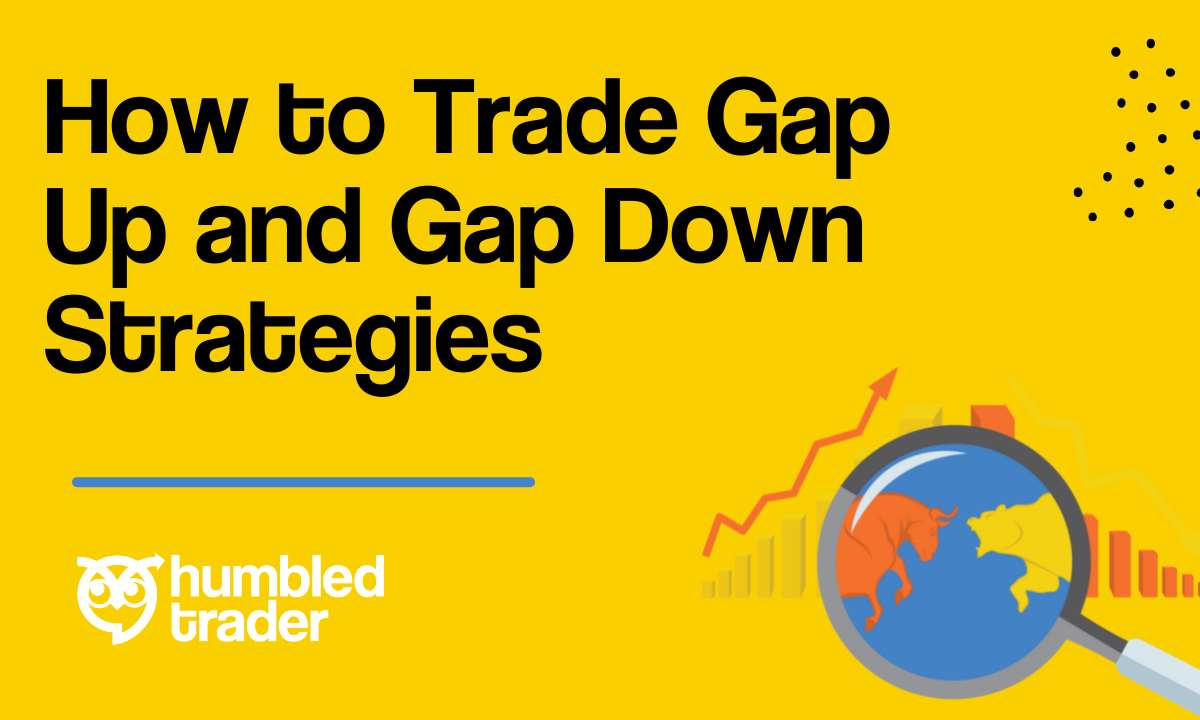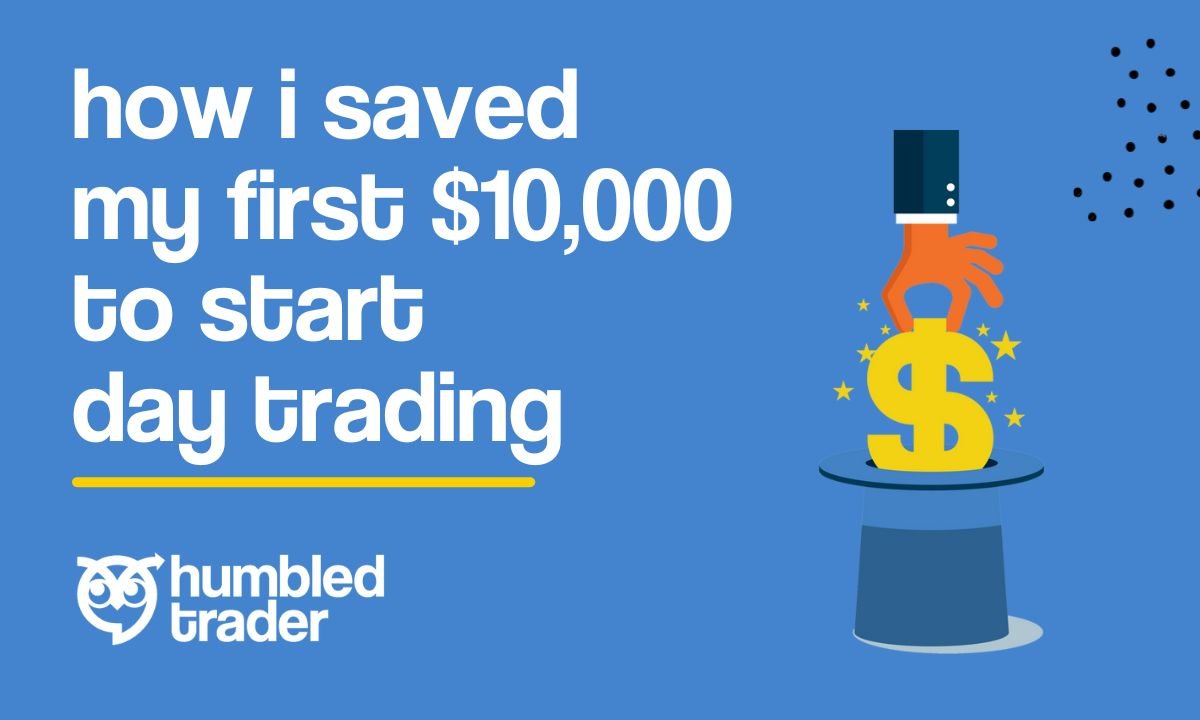How To Trade Gap Up and Gap Down Strategies

In the current fearful market environment right now, with all the surprise headlines popping up every other day… I'm sure we’ve all seen these nasty overnight gap downs and overnight gap ups.
In this article, I’ll be sharing the trading strategy that I've personally been using to profit on these overnight gaps, whether it's an optimistic gap up or a gnarly gap down overnight… which we’ve all seen way too often at times. Therefore, we’ve got to learn to profit from this strategy.
Many traders who are still new and inexperienced would simply say, forget it, I would rather go work at McDonald’s instead.
The more experienced traders, however, would be able to tell the difference between these stocks and still be able to identify opportunities to profit from other people’s emotions in the market.
And they’ll still hit up McDonald’s after the market closes anyways.
Background
Alright, there are two key factors to this gap trading strategy. The first one is based on short-term technical analysis. That is whether we see a gap up or gap down overnight.
For those who are not familiar with this term, an overnight gap refers to the drastic increase or decrease of the stock’s trading price in the premarket hours, compared to the previous day's closing price.
Examples
Let's use an example:
Let’s say the previous day's closing price was around $75. However, the next morning when we saw the stock in the PM session, the stock was trading around $68.
That stock price had decreased by about 10% overnight. This is what we call a gap down. Generally speaking a technical gap down like this is not enough to indicate whether the stock is going to rally higher or lower, but in this specific case, this is still a valid short strategy and we’re going to explain why later on.
Now that we understand what a technical gap is, it should be very easy to understand what a gap up is. Using another example, we’ll say the stock closed at around $38.7, and the next morning this thing is hovering around $40.7 premarket. That's an overnight gain of $2 a share, or a 5% gap up. Unlike the previous example of a gap down, the technical gap ups overnight in the current market does set up for a nice short for this gap strategy.
Real world examples
In a real world example, on TDOC, I was looking at $40-$41 dollars as a short entry. I was looking for the stock to break down some premarket support and eventually sell off the entire gap up back to where it came from.
I personally messed up on this trade. I was right on the short thesis for this gap up strategy, however, just off on the timing… and unfortunately, I couldn't hold on long enough to see the stock eventually break down.
But, this strategy thesis was correct; I've traded the same strategy on many other stocks in the past before.
Now, you must be wondering, “but Shay, this is not what you said last year. Last year many gap ups that broke out higher are good longs and all the stonks went to the moon.”
Well, that was before and the market is ever-changing. The sentiment is much different now. Unless you want to end up working at McDonald’s, stop buying breakouts.
Nothing wrong with McDonald’s, btw. I still love the Oreo Mcflurry and fries… yes at the same time.
Now pay attention my fellow humbled traders, as we’re about to dive into the current market outlook and trader’s psychology.
Trader Psychology
I think It’s very important to understand the “WHY”, or the psychology behind these huge gap up or gap down moves, especially if you are trading short-term in the current market environments.
Almost all the big moves this year are driven by one thing and one thing only… fear. The fear of oil prices spiking, the fear of negative economic data, the fear of inflation, the fear of tech companies laying off workers, the fear of another disease, and the list just goes on and on.
Fear is a much stronger emotion than optimism or confidence. That's the reason the bulls take the stairs … and the bears take the windows.
There isn't a lot of confidence in the market, and that's why with a lot of breakouts and overnight gap ups, you’ll see stocks sell off more often than not. Obviously, this isn’t always the case; nothing is ever 100% guaranteed.
Strategy part 2
So earlier we talked about the first factor for this strategy, and it was the technical gap up or gap down. The second factor to this strategy is, whether there is a negative or a positive catalyst. Let me explain.
As I have often talked about in my trading recap videos, there are large cap stocks that make overnight moves with their own company catalyst. It could be earnings, potential deals going through, or the newest drama involving “Elon Musk.”
For example, GME stock gapped up and moved higher overnight after announcing they were doing a 4:1 forward split.
Or DASH in our earlier example, gapped down because of negative news that AMZN was making a move into their market.
And guess what, no one dares to fight AMZN, especially not after seeing Jeff Bezos’ outfit on a yacht right here.
On the other hand, there are stocks that do not have their own company-specific news. For example, the TDOC overnight gap-up we talked about earlier. It was gapping up on what we call “air.”
The fact that TDOC did not have a strong catalyst to support this overnight gap up, is a contributing factor to the short thesis on this gap trading strategy.
Let’s use another scenario. In this particular circumstance, UBER stock gapped down overnight due to the same catalyst as DASH. Amazon took a stake in Grubhub and extended the food delivery service to their prime membership.
This move from Amazon will directly steal market shares from companies like UBER and Doordash, who are operating in the same food delivery space. Therefore, UBER stock reacted negatively.
The way I usually like to trade this kind of overnight gap down with a negative catalyst is to wait for the bounce to short.
Don't be that person who shortsat weakness down at PM support or low of the day. Sure, maybe that’ll work once a while… but in the long run, that's a very very high risk entry. I will repeat, down short it at the bottom, but instead wait for a bounce, then ride it down and collect your profits.
Key Takeaways
A few key takeaways to remember about this gap strategy, specifically on the short side:
The higher the overnight gap up is, the more likely it is to sell off.
The lower the overnight gap down is, the higher you should wait for the stock to bounce in order to short.
Both of the above tips are all based on technical analysis. However, please do not forget about the third key takeaway - the fundamental catalyst.
Technicals tell you when to enter, but fundamentals tell you the thesis and how hard to hit the stock.
Conclusion
If you need further explanation on the technical analysis we just talked about or trading earnings, make sure to check out my other articles or my videos on Youtube to learn from my other free, beginner-friendly, step-by-step day trading strategies!
If you want to learn more about my day trading strategies and especially risk management, make sure to check out the Humbled Trader Community
Don’t feel like reading? Watch the video.



